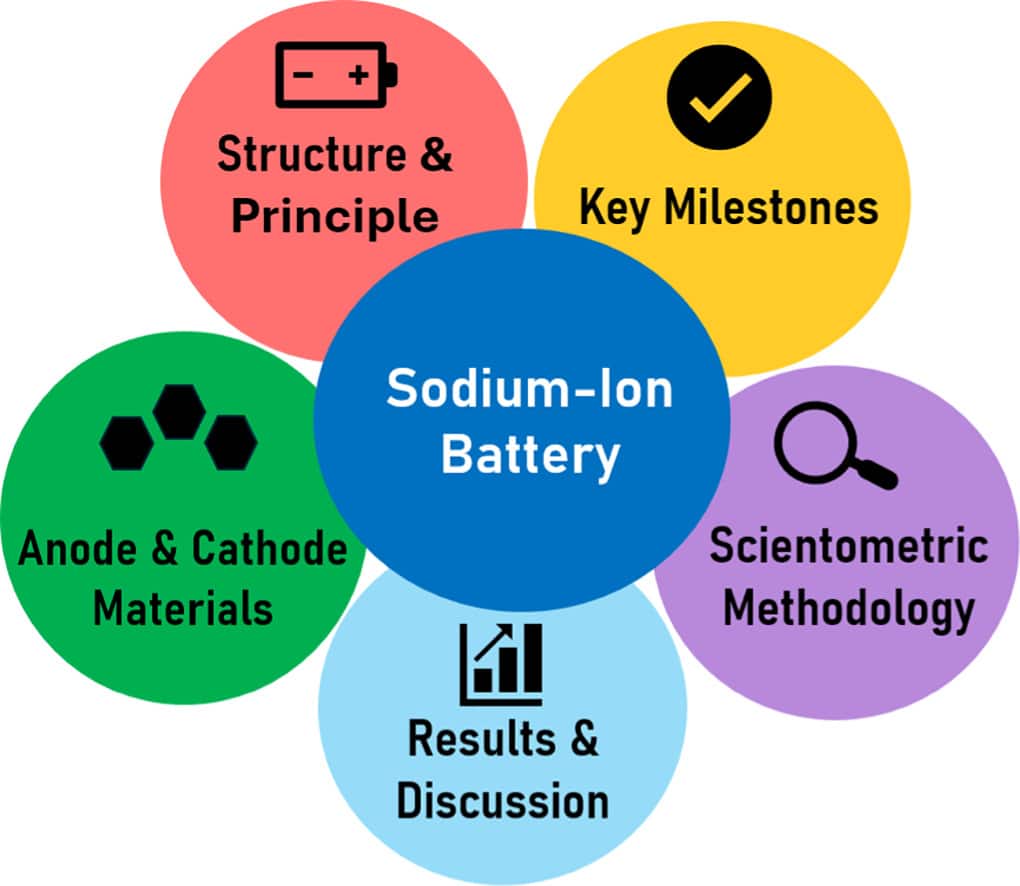By 2024, the global sodium-ion battery (SIB) research ecosystem had generated over 15,600 peer-reviewed publications—an exponential growth from fewer than 10 articles annually just two decades prior. This surge reflects not only scientific interest but also rising industrial urgency to find lithium alternatives amid volatile pricing and geopolitical constraints. A new scientometric review by Qahtan et al. provides the first comprehensive data-driven mapping of the SIB field, revealing both deep-rooted challenges and underexploited opportunities that will shape the trajectory of scalable energy storage.
Material Abundance, But Technological Gaps
Sodium, the sixth most abundant element in Earth’s crust, boasts a global reserve base roughly 1,000 times greater than lithium. Extracted from readily available compounds such as sodium chloride and sodium carbonate, it offers a far more secure and geopolitically diverse supply chain. This abundance translates into significant cost advantages: sodium-based battery chemistries rely on lower-cost materials and simpler extraction processes, which could substantially reduce battery capital expenditure for grid-scale applications.
Yet the fundamental physics of sodium—its larger ionic radius and heavier atomic mass—introduces several drawbacks. Compared to lithium, sodium diffuses more slowly and causes greater mechanical strain during intercalation, resulting in lower energy density and reduced cycle life. These technical limitations have slowed SIB commercialization, particularly in markets that demand high energy-to-weight ratios, such as electric vehicles and portable electronics.
Electrode Engineering: Progress and Limitations
The most significant research strides have been made in electrode materials. Hard carbon has emerged as the leading anode material due to its ability to accommodate sodium ions despite their size. Cathode innovations have centered on layered transition metal oxides and polyanionic compounds, each balancing trade-offs between capacity, structural integrity, and cost.
Despite improvements in cyclability and structural stability, energy densities for SIBs still lag behind commercial lithium-ion batteries. Researchers have sought to close this gap through nanostructuring and doping strategies, yet such modifications often introduce cost or scalability issues. The review identifies the solid electrolyte interphase (SEI) as a persistent bottleneck; instability here degrades performance and limits practical deployment, particularly in high-voltage configurations.
Electrolytes and Interface Control Remain Frontier Challenges
Advances in electrolyte formulations—particularly those designed for low-temperature operation and SEI stabilization—have been critical for improving safety and ion mobility. While some aqueous and solid-state designs show promise, the field lacks consensus on a universally effective electrolyte system for SIBs. The high reactivity of sodium with certain solvents and electrodes continues to hinder long-term performance and commercial durability.
These technical gaps are not merely academic. As renewable penetration increases grid variability, SIBs are often touted as a natural fit for stationary energy storage systems. However, performance metrics must improve further for large-scale installations to compete with established lithium-ion or even vanadium redox technologies.
China and the U.S. Lead—but with Divergent Priorities
Qahtan’s scientometric analysis reveals a highly concentrated research landscape. China dominates in both volume and institutional output, driven by state-backed research funding and national strategic goals for battery self-sufficiency. The U.S., while producing fewer total publications, plays a critical role in high-impact research, often in collaboration with European institutions.
However, collaboration patterns suggest uneven knowledge transfer between academic breakthroughs and industrial uptake. Patent activity and pilot projects remain sparse compared to the scale of lithium-ion deployment. This fragmentation could delay SIB commercialization unless mechanisms for cross-sector integration are strengthened.
Emerging Applications and the Limits of Conventional Thinking
While much attention remains focused on matching lithium-ion’s benchmarks, the review argues for a reframing of SIB goals. Rather than seeking parity in all performance aspects, SIBs could unlock unique niches where cost, safety, and resource security are prioritized over volumetric energy density. These include stationary grid storage, backup systems for telecom infrastructure, and potentially low-range EVs or e-bikes in cost-sensitive markets.
Notably, the review highlights hybrid storage systems—pairing SIBs with capacitors or other batteries—as a promising pathway. Such configurations can offset response time or density deficits by leveraging complementary technologies. However, these architectures require sophisticated control strategies and remain underexplored in large-scale trials.
Strategic Gaps and Future Directions
A key insight from the scientometric review is the field’s thematic fragmentation. While anode and cathode research dominates, far less attention is given to integration challenges, manufacturing scalability, or techno-economic modeling—factors critical to commercial viability. Moreover, the lack of harmonized testing standards and lifecycle analysis clouds comparative assessments with incumbent technologies.
The authors propose a coordinated research agenda focused on real-world deployment metrics: cost per cycle, environmental footprint, and manufacturability. They also advocate for expanding research in overlooked areas such as interface chemistry, binder optimization, and battery recycling—domains essential to long-term sustainability.
As lithium supply risks persist and demand for energy storage accelerates, sodium-ion batteries are no longer a theoretical curiosity. Their success, however, hinges not just on materials breakthroughs but on system-level thinking that aligns scientific progress with industrial imperatives and policy incentives. Without such alignment, the technology risks remaining a solution in search of a market.





